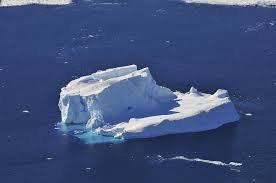The South Pole isn’t known for much beyond ice and penguins given how generally inhospitable it is. However, this may not be the full picture, as scientists recently discovered some rather intriguing remains of creatures embedded within the ice.
Reported by Science News, scientists stationed at the Antarctic research field camp SALSA (Subglacial Antarctic Lakes Scientific Access) uncovered some new and unusual creatures deep within the continent.
Being the first to sample Lake Mercer, there was no telling what the team of 50 might have found within the ice. Around a kilometer below the surface, mud and water extracted from the hole was examined, just recently revealing the presence of the animal remains to the world.
According to one of the researchers, micropaleontologist David Harwood from the University of Nebraska–Lincoln, who examined the samples under a microscope, the remains apparently looked something like “squished spiders” and crustaceans, as well as worms. He also managed to identify what are believed to be tardigrades, one of the most resilient creatures ever discovered on the planet.
Outside of the tardigrade samples, the rest are quite astonishing given how inhospitable the Antarctic climate has seemingly always been. Even the idea that environments like Lake Mercer could be home to anything larger than microbial creatures seemed out of the question before now, a theory only compounded by 2013 drilling into Lake Whillans nearby.
That being said, the exact reason why these remains are there as well as why they are not found anywhere else on the continent so far remains to be seen. One reason proposed by glaciologist Slawek Tulaczyk (who was not involved in the research) involves various forces like wind, water, or ice simply transferring the remains into the lake, essentially meaning they did not originate from the area at all.
That being said, further study will most likely reveal the answer in time. Though these remains may only be remains, it does not rule out the possibility that other, similar lifeforms may still be alive and thriving deeper within the lakes. If this is true, it could shed new light as to just how resilient life on planet Earth actually is, being able to set up shop in what is largely believed to be one of the most uninhabitable areas we know of outside of the vacuum of space, so much so it may even give hope to the idea of life in space itself.



